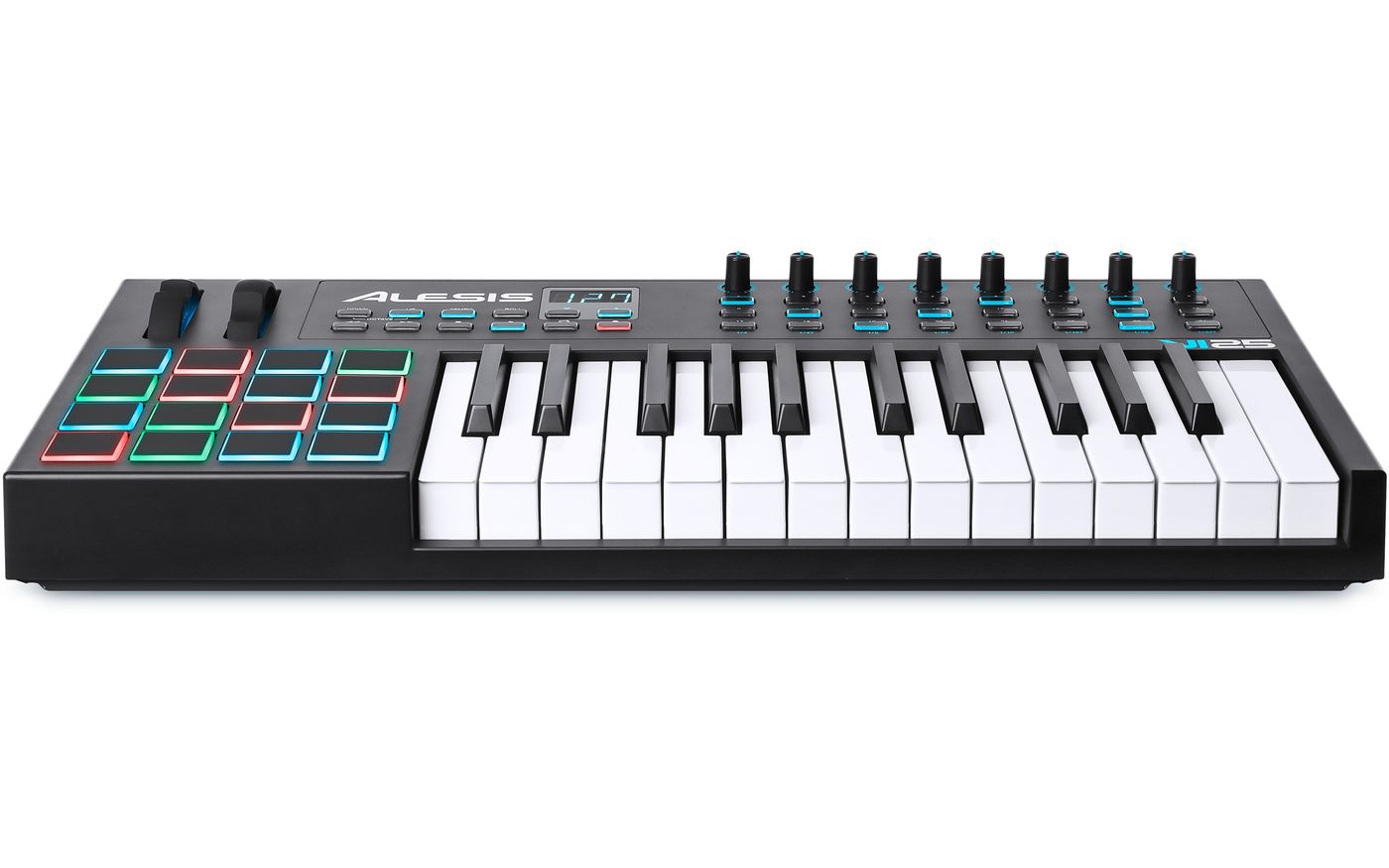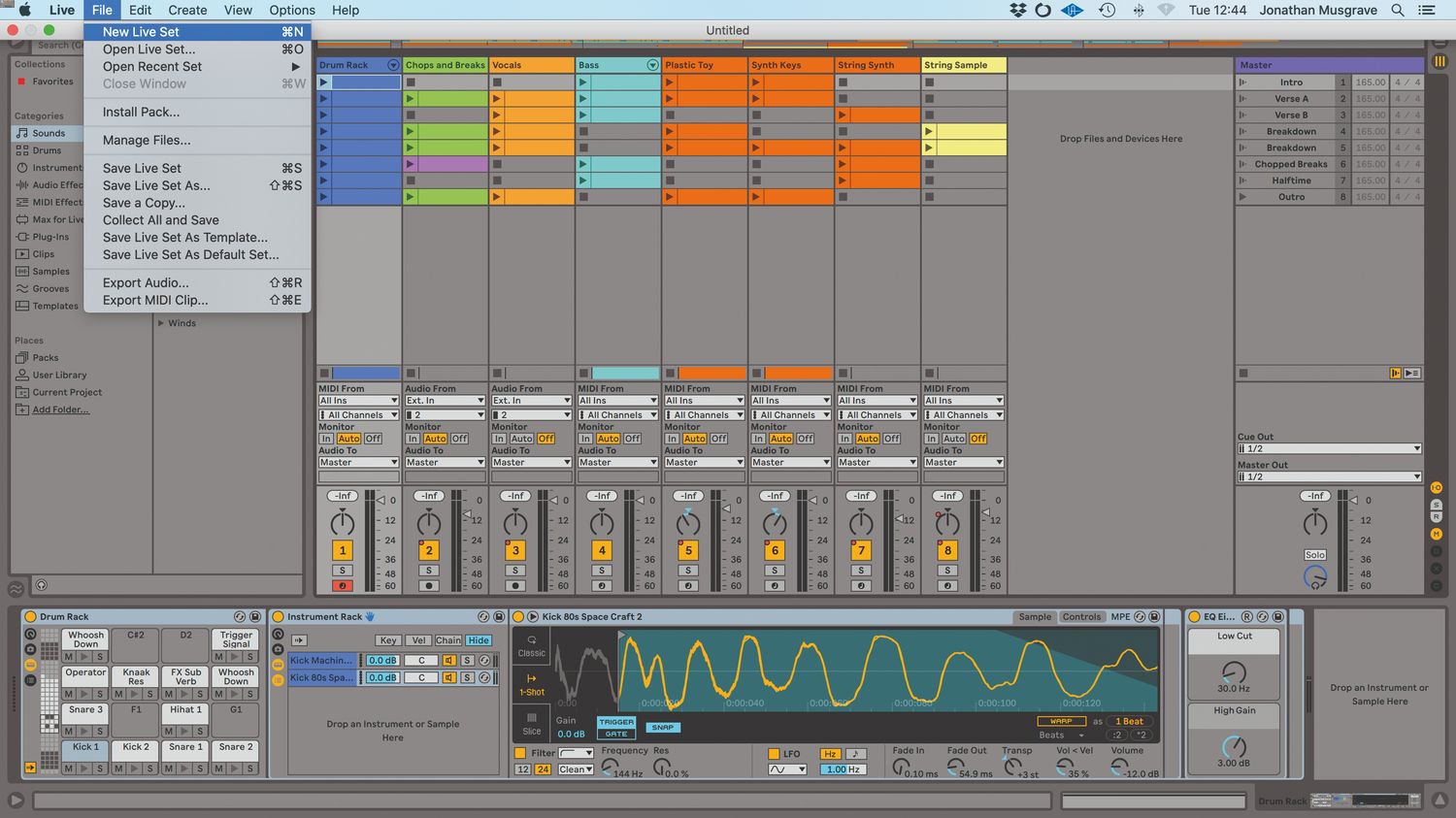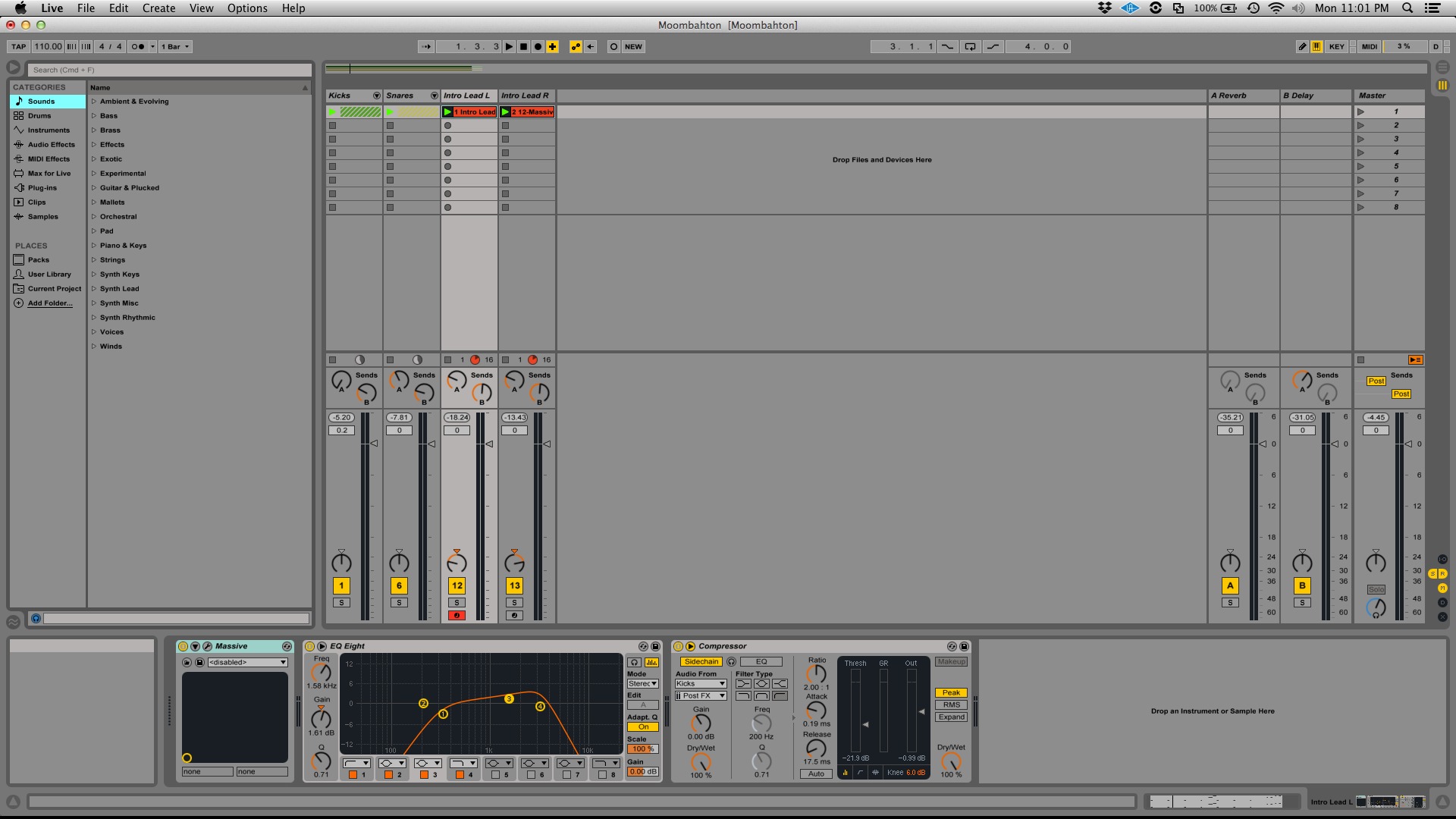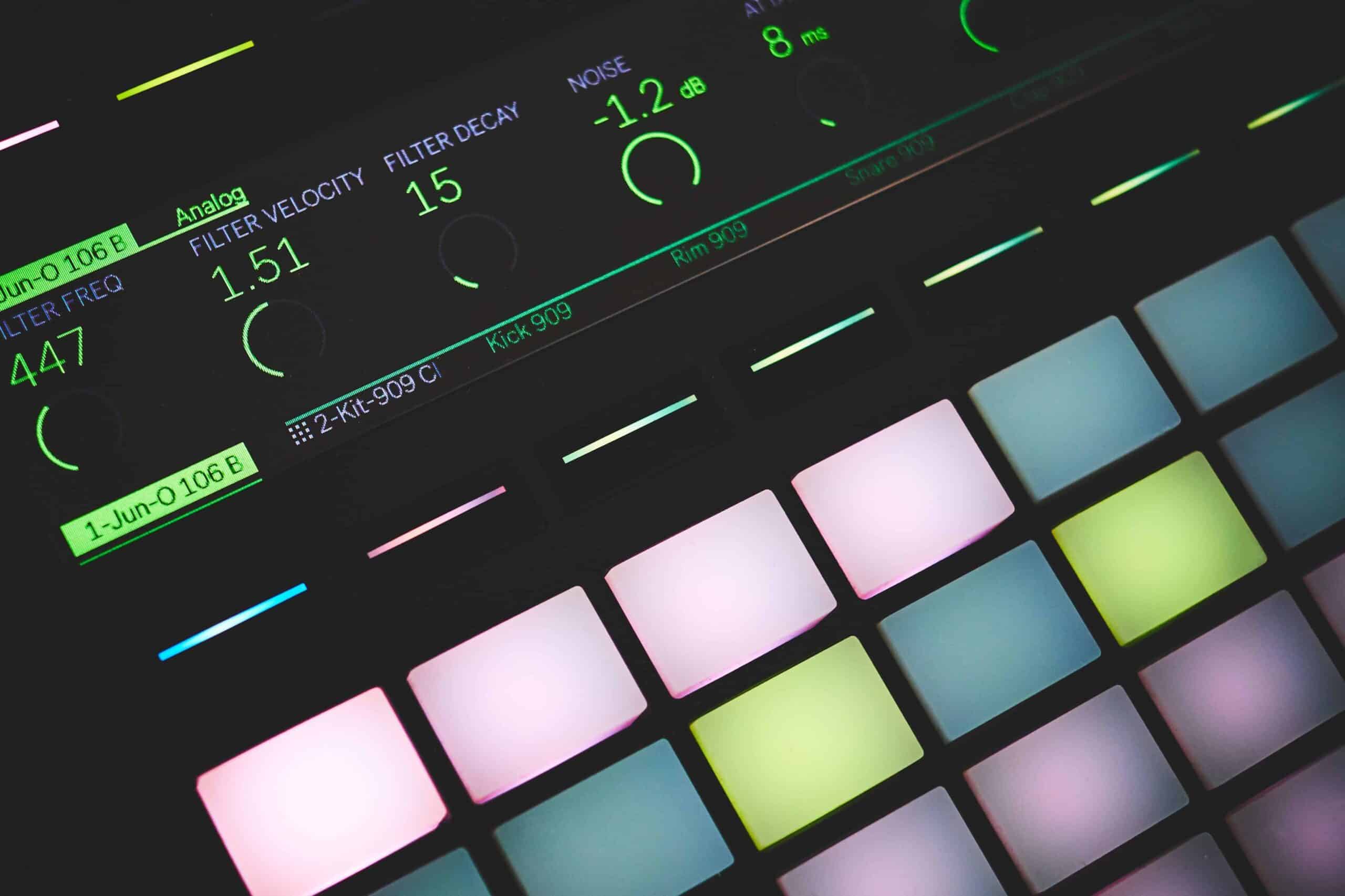Home>Production & Technology>MIDI>How To Draw MIDI In Ableton


MIDI
How To Draw MIDI In Ableton
Modified: February 22, 2024
Learn how to draw MIDI in Ableton with our step-by-step guide. Create and edit MIDI notes easily to enhance your music production.
(Many of the links in this article redirect to a specific reviewed product. Your purchase of these products through affiliate links helps to generate commission for AudioLover.com, at no extra cost. Learn more)
Table of Contents
Introduction
MIDI, which stands for Musical Instrument Digital Interface, is a powerful tool for musicians and producers. It allows you to control and manipulate various aspects of music production, from note sequences to instrument parameters, all within the digital realm. When it comes to creating MIDI music in a digital audio workstation (DAW) like Ableton Live, drawing MIDI notes is a fundamental skill that opens up a world of creative possibilities.
In this comprehensive guide, we will explore the process of drawing MIDI in Ableton Live, a popular DAW known for its intuitive MIDI capabilities. Whether you're a seasoned producer or a newcomer to the world of MIDI, understanding how to draw MIDI in Ableton Live can significantly enhance your music production workflow.
Throughout this article, we will delve into the essential steps of setting up MIDI tracks, drawing MIDI notes, and editing them to achieve the desired musical expression. Additionally, we will touch upon the usage of MIDI controllers to add a dynamic and tactile dimension to your MIDI composition process.
By the end of this guide, you will have a solid grasp of drawing MIDI in Ableton Live, empowering you to unleash your creativity and bring your musical ideas to life with precision and finesse. So, let's embark on this MIDI journey and uncover the art of drawing MIDI in Ableton Live!
Setting Up MIDI Tracks
Setting up MIDI tracks in Ableton Live is the first step towards harnessing the full potential of MIDI-based music production. Whether you're creating melodies, crafting intricate chord progressions, or programming rhythmic patterns, understanding how to configure MIDI tracks is crucial for a seamless music production workflow.
-
Creating a MIDI Track: To begin, launch Ableton Live and navigate to the session or arrangement view. Next, click on the "Create" menu and select "MIDI Track" to generate a new MIDI track within the project. This serves as the canvas on which you'll draw and manipulate MIDI notes.
-
Selecting MIDI Instruments: After creating the MIDI track, it's time to choose the MIDI instrument that will produce sound based on the MIDI data you input. In Ableton Live, this is achieved by dragging and dropping an instrument device, such as a synthesizer or sampler, onto the MIDI track. This instrument will interpret the MIDI notes you draw and generate the corresponding audio output.
-
Configuring MIDI Input and Output: Once the MIDI instrument is in place, you may need to configure the MIDI input and output settings. This involves specifying the MIDI controller or virtual instrument that will send MIDI data to the track, as well as defining the destination for the MIDI output, such as a specific synthesizer or software instrument.
-
Setting MIDI Channel and Parameters: In some cases, you may need to adjust the MIDI channel and parameters for the MIDI track and associated instruments. This step ensures that the MIDI data is routed and processed correctly, allowing for seamless communication between the MIDI track and the designated instruments.
By following these steps, you can effectively set up MIDI tracks in Ableton Live, laying the foundation for a dynamic and flexible music production environment. With MIDI tracks in place, you're ready to dive into the creative process of drawing MIDI notes and shaping musical ideas with precision and artistry.
Drawing MIDI Notes
Drawing MIDI notes is where the magic of music creation truly begins. In Ableton Live, the process of drawing MIDI notes involves translating your musical ideas into a visual representation that the software can interpret and play back. Whether you're crafting melodies, composing harmonies, or designing intricate rhythmic patterns, the ability to draw MIDI notes empowers you to express your musical vision with precision and creativity.
Step-by-Step Guide to Drawing MIDI Notes in Ableton Live
-
Selecting the MIDI Clip: Before you start drawing MIDI notes, it's essential to select the MIDI clip within the MIDI track where you want to input your musical ideas. This clip serves as the canvas for your MIDI composition and provides a timeline for organizing and arranging your musical phrases.
-
Activating the MIDI Editor: Once the MIDI clip is selected, enter the MIDI editing mode by double-clicking on the clip. This action opens the MIDI editor, a versatile workspace where you can draw, edit, and manipulate MIDI notes with ease.
-
Choosing the MIDI Note Input Mode: Ableton Live offers multiple input modes for drawing MIDI notes, including the pencil tool, pen tool, and grid-based input. Select the desired input mode based on your preference and the nature of the musical passage you intend to create.
-
Placing MIDI Notes on the Grid: With the MIDI editor active and the preferred input mode selected, you can start placing MIDI notes on the grid. Simply click or drag the mouse within the editor to input individual notes or longer note sequences, aligning them with the grid to ensure rhythmic accuracy.
-
Adjusting Note Attributes: After placing MIDI notes, you can adjust their attributes, such as pitch, velocity, and duration, to sculpt the musical phrases according to your artistic vision. This level of control allows for nuanced expression and dynamic variation within the MIDI composition.
-
Exploring Artistic Possibilities: Beyond basic note input, the MIDI editor in Ableton Live offers a plethora of creative tools and features, including quantization, note manipulation, and scale-based editing, enabling you to explore diverse artistic possibilities and refine your MIDI compositions with finesse.
By mastering the art of drawing MIDI notes in Ableton Live, you unlock a world of musical expression and creativity, shaping your musical ideas into cohesive and compelling compositions. Whether you're sketching out a melodic motif, crafting intricate chord progressions, or programming intricate drum patterns, the ability to draw MIDI notes with precision and artistry is a cornerstone of modern music production.
With the essential techniques and creative insights outlined in this guide, you're well-equipped to embark on a captivating journey of MIDI composition in Ableton Live, harnessing the power of MIDI notes to bring your musical ideas to life with depth and emotion. So, dive into the realm of MIDI creation, and let your creativity flow seamlessly through the art of drawing MIDI notes in Ableton Live.
Editing MIDI Notes
Once MIDI notes are drawn, the process of refining and shaping them to achieve the desired musical expression becomes paramount. In Ableton Live, the ability to edit MIDI notes with precision and creativity empowers music producers to fine-tune compositions, add nuanced variations, and craft compelling musical arrangements. Whether it involves adjusting note attributes, refining rhythmic patterns, or exploring melodic variations, the art of editing MIDI notes is a fundamental aspect of MIDI-based music production.
Refining Note Attributes
After drawing MIDI notes, the next step involves refining their attributes to infuse musical passages with depth and character. This includes adjusting note velocities to modulate the intensity of individual notes, altering note lengths to create rhythmic dynamics, and fine-tuning note pitches to craft melodic contours. In Ableton Live's MIDI editor, these adjustments can be made with precision, allowing for subtle nuances and expressive variations within the composition.
Quantization and Groove Control
Ableton Live offers powerful quantization features that enable producers to align MIDI notes to a specific rhythmic grid, ensuring tight and cohesive musical timing. Additionally, the Groove Pool provides a diverse selection of groove templates, allowing for the application of rhythmic feel and swing to MIDI notes, infusing the composition with a sense of groove and human-like rhythm. By leveraging these tools, producers can enhance the rhythmic fluidity and musicality of MIDI compositions, adding a natural and dynamic touch to the music.
Articulation and Expression
Beyond basic note adjustments, the editing process encompasses articulation and expression, allowing producers to imbue MIDI performances with a sense of realism and emotion. This involves utilizing MIDI control parameters, such as modulation, pitch bend, and aftertouch, to shape the timbral and expressive qualities of MIDI notes. In Ableton Live, the integration of MIDI controllers and automation further amplifies the scope for adding nuanced articulation and expressive gestures to MIDI compositions, elevating the musical narrative with depth and emotion.
Iterative Composition and Experimentation
Editing MIDI notes in Ableton Live fosters an environment of iterative composition and experimentation, where producers can continuously refine and evolve musical ideas. By embracing a non-linear and dynamic approach to MIDI editing, producers can explore diverse musical possibilities, rearrange note sequences, and sculpt intricate musical motifs, fostering a creative process that thrives on exploration and discovery. This iterative approach to MIDI editing encourages producers to push the boundaries of musical expression, leading to captivating and innovative compositions.
In essence, the art of editing MIDI notes in Ableton Live transcends mere technical adjustments, evolving into a creative journey of musical refinement and expression. By honing the craft of MIDI note editing, producers can breathe life into their compositions, infusing them with depth, emotion, and a distinct artistic identity. Through meticulous attention to note attributes, rhythmic nuances, expressive gestures, and iterative exploration, the process of editing MIDI notes becomes a transformative force, shaping musical ideas into captivating and evocative compositions.
Using MIDI Controllers
Harnessing the expressive potential of MIDI controllers is a pivotal aspect of modern music production, offering a tactile and dynamic interface for shaping and manipulating MIDI-based compositions. In the realm of Ableton Live, the integration of MIDI controllers introduces a hands-on dimension to the creative process, allowing producers to interact with their music in real-time, infuse performances with human-like nuances, and unlock a realm of expressive possibilities.
Integrating MIDI Controllers with Ableton Live
Ableton Live provides seamless integration with a wide array of MIDI controllers, ranging from keyboard controllers and pad-based controllers to advanced control surfaces and custom MIDI instruments. Upon connecting a MIDI controller to Ableton Live, producers can map its physical controls, such as knobs, faders, and pads, to various parameters within the software, fostering a direct and intuitive relationship between the performer and the music.
Real-Time Performance and Expression
One of the primary advantages of using MIDI controllers in Ableton Live is the ability to deliver real-time performances infused with expressive nuances and dynamic gestures. Whether it involves manipulating virtual instrument parameters, modulating effect settings, or triggering MIDI clips and scenes, MIDI controllers empower producers to shape the musical narrative with spontaneity and finesse, blurring the line between traditional instrumentation and digital manipulation.
Dynamic Control and Automation
MIDI controllers serve as conduits for dynamic control and automation within Ableton Live, allowing for the real-time manipulation of MIDI notes, audio effects, and mixer parameters. By assigning MIDI controller inputs to specific software parameters, producers can craft intricate automation curves, modulate instrument articulations, and sculpt evolving sonic textures, instilling the music with a sense of fluidity and organic movement.
Creative Exploration and Performance Techniques
The integration of MIDI controllers opens up a realm of creative exploration and performance techniques, enabling producers to experiment with innovative playing styles, improvisational approaches, and gestural interactions. From expressive pitch bends and modulations to rhythmic pad triggering and dynamic parameter sweeps, MIDI controllers facilitate a dynamic and personalized approach to music performance, fostering a sense of connection and intimacy between the performer and the music.
Enriching the Production Workflow
Beyond performance and expression, MIDI controllers enrich the overall production workflow in Ableton Live, offering intuitive means of arranging, mixing, and sculpting sound. Whether it involves tactile mixing with motorized faders, intuitive clip launching with pad-based controllers, or real-time parameter modulation with touch-sensitive knobs, MIDI controllers streamline the creative process, fostering a fluid and immersive production experience.
In essence, the utilization of MIDI controllers in Ableton Live transcends traditional notions of music production, ushering in a new era of interactive and expressive composition. By embracing the tactile and dynamic nature of MIDI controllers, producers can infuse their music with a sense of spontaneity, emotion, and human-like expression, elevating their compositions to new heights of creativity and artistry.
Conclusion
In conclusion, the art of drawing MIDI in Ableton Live is a transformative journey that empowers music producers to shape their musical ideas with precision, creativity, and expressive depth. From setting up MIDI tracks and drawing MIDI notes to editing them with finesse and integrating MIDI controllers for dynamic performance, the process of MIDI composition in Ableton Live offers a rich tapestry of creative possibilities.
By mastering the intricacies of setting up MIDI tracks, producers can establish a flexible and dynamic foundation for their musical explorations. The seamless integration of MIDI instruments and meticulous configuration of MIDI input and output settings lay the groundwork for a cohesive and expressive music production environment. With the ability to set MIDI channels and parameters, producers can ensure seamless communication between MIDI tracks and associated instruments, fostering a seamless and immersive music creation experience.
Drawing MIDI notes in Ableton Live serves as a gateway to musical expression, allowing producers to translate their creative vision into tangible musical phrases. The step-by-step process of selecting MIDI clips, activating the MIDI editor, and choosing the appropriate input mode sets the stage for crafting melodies, harmonies, and rhythmic patterns with precision and artistry. By exploring the artistic possibilities within the MIDI editor, producers can breathe life into their compositions, infusing them with depth, emotion, and a distinct artistic identity.
The art of editing MIDI notes in Ableton Live transcends technical adjustments, evolving into a creative journey of musical refinement and expression. Through meticulous attention to note attributes, rhythmic nuances, expressive gestures, and iterative exploration, producers can shape their musical ideas into captivating and evocative compositions. The integration of MIDI controllers adds a tactile and dynamic dimension to the creative process, allowing producers to interact with their music in real-time, infuse performances with human-like nuances, and unlock a realm of expressive possibilities.
In essence, the journey of drawing MIDI in Ableton Live is a testament to the boundless potential of modern music production. By embracing the art of MIDI composition, producers can unleash their creativity, shape their musical narratives with depth and emotion, and embark on a captivating journey of sonic exploration. With its intuitive MIDI capabilities and versatile creative tools, Ableton Live stands as a beacon of inspiration for producers seeking to elevate their musical expressions through the art of drawing MIDI.











